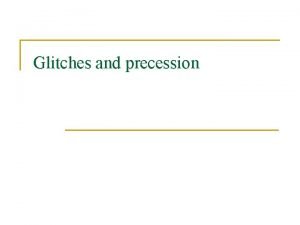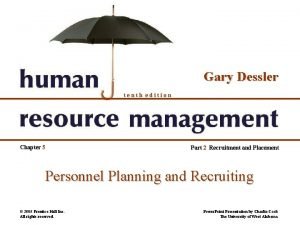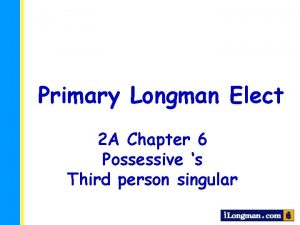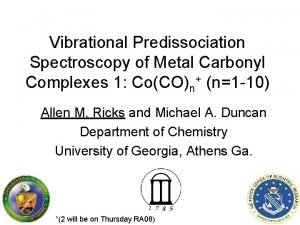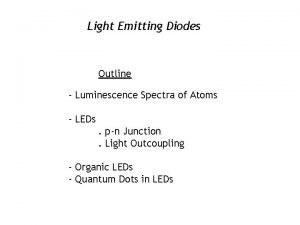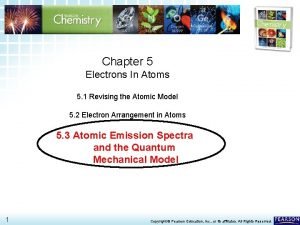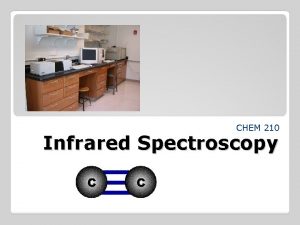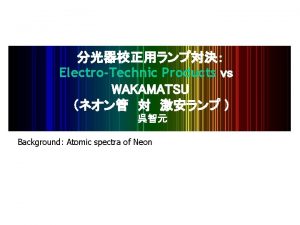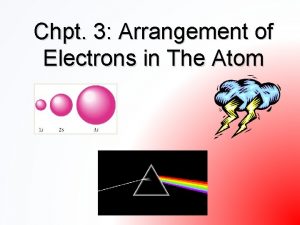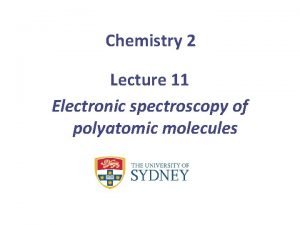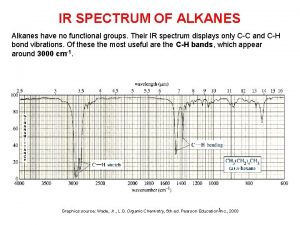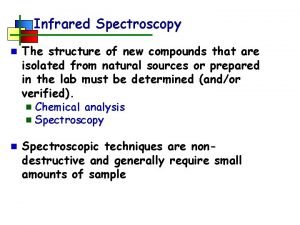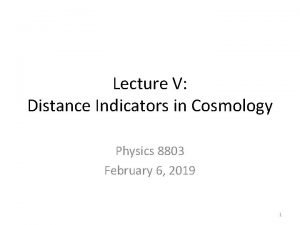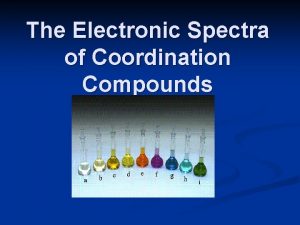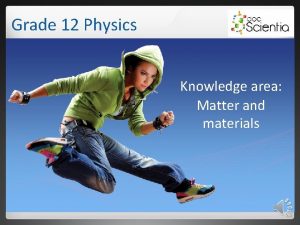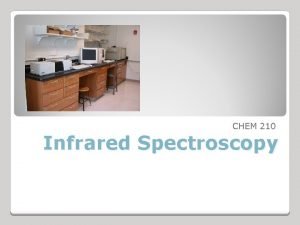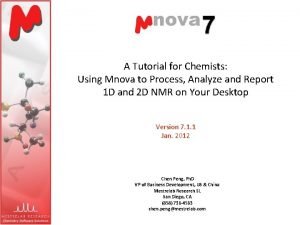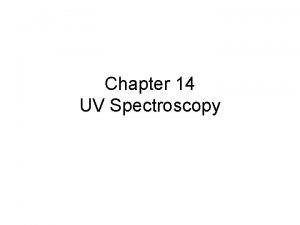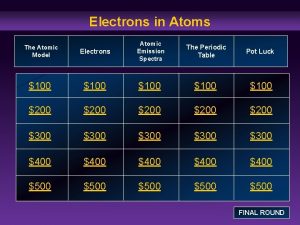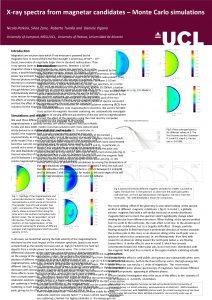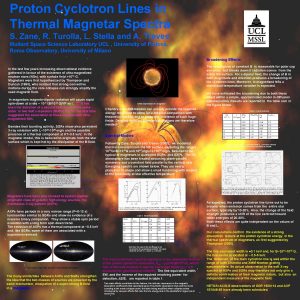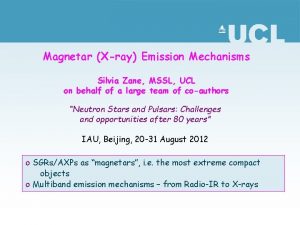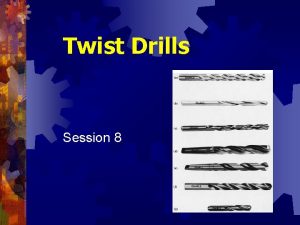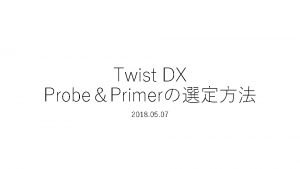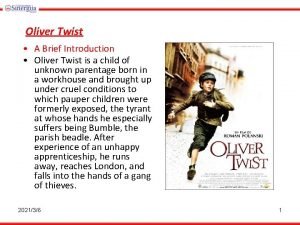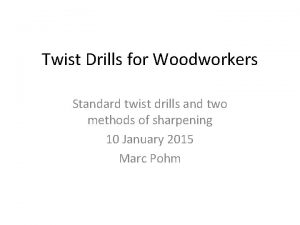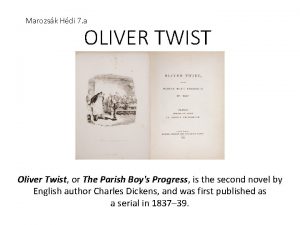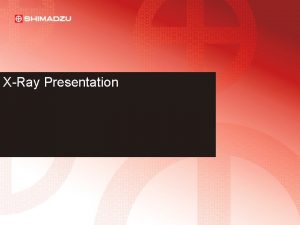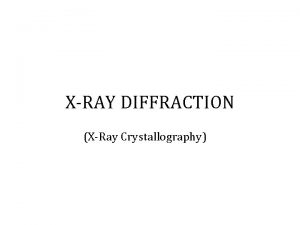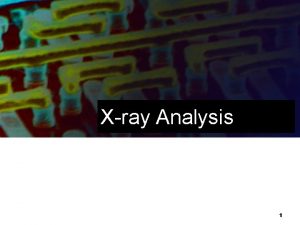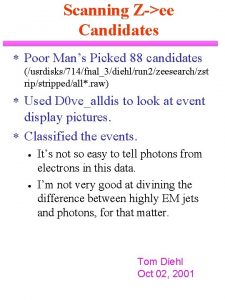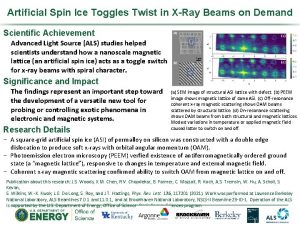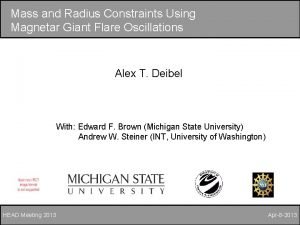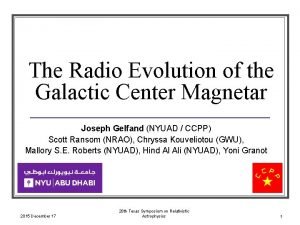Xray Spectra from Magnetar Candidates A Twist in
































- Slides: 32

X-ray Spectra from Magnetar Candidates A Twist in the Field R Turolla Department of Physics University of Padova, Italy Credits GL Israel, S. Mereghetti, L Nobili, N Rea, N Sartore, L Stella, A Tiengo, S Zane Magnetic Fields and Neutron Star Surface - Cocoyoc 14 February 2007

Galactic NS Population § Present supernova rate in the Galaxy ≈ 0. 01 yr -1 § The Galaxy is ≈ 10 Gyr old 108 – 109 neutron stars § Most neutron stars are known through their pulsed radio-emission § Galactic pulsar population ≈ 105 (> 1500 detected) Magnetic Fields and Neutron Star Surface - Cocoyoc 14 February 2007

Pulsars and… § The majority of neutron stars are old, dead objects § Observations in the X- and γ-rays revealed the existence of populations of radio-quiet neutron stars § X-ray binaries § X-ray dim isolated neutron stars § Soft γ-repeaters ISOLATED § Anomalous X-ray pulsars Magnetic Fields and Neutron Star Surface - Cocoyoc 14 February 2007

Soft Gamma Repeaters - I Rare class of sources, 4 confirmed (+ 1): SGR 1900+14, SGR 1806 -20, SGR 1627 -41 in the Galaxy and SGR 0526 -66 in the LMC n Strong bursts of soft γ-/hard X-rays: L ~ 1041 erg/s, duration < 1 s n Bursts from SGR 1806 -20 (INTEGRAL/IBIS, , Gőtz et al 2004) Magnetic Fields and Neutron Star Surface - Cocoyoc 14 February 2007

Soft Gamma Repeaters - II n n n Much more energetic “Giant Flares” (GFs, L ≈ 1045 -1047 erg/s) detected from 3 sources No evidence for a binary companion, association with a SNR in one case Persistent X-ray emitters, L ≈ 1035 erg/s Pulsations discovered both in GFs tails and persistent emission, P ≈ 5 -10 s Huge spindown rates, Ṗ/P ≈ 10 -10 ss-1 (Kouveliotou et al. 1998; 1999) Magnetic Fields and Neutron Star Surface - Cocoyoc 14 February 2007

Anomalous X-ray Pulsars - I n n n Seven sources known (+ 1 transient): 1 E 1048. 1 -5937, 1 E 2259+586, 4 U 0142+614, 1 RXS J 170849 -4009, 1 E 1841 -045, CXOU 010043 -721134, AX J 1845 -0258 (+ XTE J 1810 -197) Persistent X-ray emitters, L ≈ 1034 -1035 erg/s Pulsations with P ≈ 5 -10 s Large spindown rates, Ṗ/P ≈ 10 -11 ss-1 No evidence for a binary companion, association with a SNR in three cases Magnetic Fields and Neutron Star Surface - Cocoyoc 14 February 2007

Anomalous X-ray Pulsars - II n Bursts of soft γ-/hard X-rays quite similar to those of SGRs (AXPs much less active though, bursts from two sources only) Woods & Thompson (2005) Magnetic Fields and Neutron Star Surface - Cocoyoc 14 February 2007 Time (sec)

A Tale of Two Populations ? SGRs: bursting X/γ-ray sources AXPs: peculiar class A Magnetar of steady X-ray sources Single class of objects R < ctrise ≈ 300 km: a compact object Pulsed X-ray emission: a neutron star Magnetic Fields and Neutron Star Surface - Cocoyoc 14 February 2007

Magnetars n Strong convection in a rapidly rotating (P ~ 1 ms) newborn neutron star generates a very strong magnetic field via dynamo action n Magnetars: neutron stars with surface field B > 10 BQED ~ 4 x 1014 G (Duncan & Thomson 1992; Thomson & Duncan 1993) n Rapid spin-down due to magneto-dipolar losses, Magnetic Fields and Neutron Star Surface - Cocoyoc 14 February 2007

ot n splitt ing evidence for a companion star n Spin down to present periods in ≈ 104 SPIN - DOWN ENERGY LOSS yrs requires B > 1014 G n Large measured spin-down rates n Quite natural explanation for the bursts Photo X-RAY LUMINOSITY Ėr = LX PSRs n No SGRs+AXPs High-field PSRs n. Magnetic Fields and Neutron Star Surface - Cocoyoc 14 February 2007 Why magnetars ? hold SGRs + AXPs thres

SGRs and AXPs X-ray Spectra - I n 0. 5 – 10 ke. V emission well represented by a blackbody plus a power law AXP 1048 -5937 (Lyutikov & Gavriil 2005) SGR 1806 -20 (Mereghetti et al 2005) Magnetic Fields and Neutron Star Surface - Cocoyoc 14 February 2007

SGRs and AXPs X-ray Spectra - II n k. TBB ~ 0. 5 ke. V, does not change much in different sources n Photon index Г ≈ 1 – 4, AXPs tend to be softer n SGRs and AXPs persistent emission is variable (months/years) n Variability mostly associated with the nonthermal component Magnetic Fields and Neutron Star Surface - Cocoyoc 14 February 2007

Hard X-ray Emission INTEGRAL revealed substantial emission in the 20 -100 ke. V band from SGRs and APXs Mereghetti et al 2006 Hard power law tails with Г ≈ 1 -3, hardening wrt soft X-ray emission required in AXPs Hard emission pulsed Magnetic Fields and Neutron Star Surface - Cocoyoc 14 February 2007

Hardness vs Spin-down Rate Correlation between spectral hardness and spin-down rate in SGRs and AXPs (Marsden & White 2001) Correlation holds also for different states within a single source (SGR 1806 -20, Mereghetti et al 2005; 1 RXS J 1708494009, Rea et al 2005) Harder X-ray spectrum Larger Spin-down rate Magnetic Fields and Neutron Star Surface - Cocoyoc 14 February 2007

SGR 1806 -20 - I SGR 1806 -20 displayed a gradual increase in the level of activity during 2003 -2004 (Woods et al 2004; Mereghetti et al 2005) Bursts / day (IPN) § enhanced burst rate § increased persistent luminosity 20 -60 ke. V flux (INTEGRAL IBIS) The 2004 December 27 Event Spring 2003 Autumn 2003 Spring 2004 Autumn 2004 Mereghetti et al 2005 Magnetic Fields and Neutron Star Surface - Cocoyoc 14 February 2007

SGR 1806 -20 - II n n n Four XMM-Newton observations (last on October 5 2004, Mereghetti et al 2005) Pulsations clearly detected in all observations Ṗ ~ 5. 5 x 10 -10 s/s, higher than the “historical” value Blackbody component in addition to an absorbed power law (k. T ~ 0. 79 ke. V) Harder spectra: Γ ~ 1. 5 vs. Γ ~ 2 The 2 -10 ke. V luminosity almost doubled (LX ~ 1036 erg/s) Magnetic Fields and Neutron Star Surface - Cocoyoc 14 February 2007

Twisted Magnetospheres – I n The magnetic field inside a magnetar is “wound up” n The presence of a toroidal component induces a rotation of the surface layers n The crust tensile strength resists n A gradual (quasi-plastic ? ) deformation of the crust n The external field twists up (Thompson, Lyutikov & Kulkarni 2002) Magnetic Fields and Neutron Star Surface - Cocoyoc 14 February 2007 Thompson & Duncan 2001

Twisted Magnetospheres - II n TLK 02 investigated force-free magnetic equilibria n n A sequence of models labeled by the twist angle Magnetic Fields and Neutron Star Surface - Cocoyoc 14 February 2007

Twisted Magnetospheres - III n n n Twisted magnetospheres are threaded by currents Charged particles provide large optical depth to resonant cyclotron scattering Because and , a powerlaw tail expected instead of an absorption line , and Both and increase with the twist angle Magnetic Fields and Neutron Star Surface - Cocoyoc 14 February 2007

A Growing Twist in SGR 1806 -20 ? Evidence for spectral hardening AND enhanced spin-down n and correlations n Growth of bursting activity n Possible presence of proton cyclotron line only during bursts n All these features are consistent with an increasingly twisted magnetosphere Magnetic Fields and Neutron Star Surface - Cocoyoc 14 February 2007

A Monte Carlo Approach n Follow individually a large sample of photons, treating probabilistically their Preliminary investigation (1 D) by Lyutikov interactions with charged particles Basic ingredients: & Gavriil (2005) n Can handle general (3 D) geometries § Space andvery energy distribution of the More detailed modeling by Fernandez & scattering n Quite easy toparticles code, fast Thompson (2006) § Same for the seed (primary) photons n. New, Ideal up-to-dated for purely scattering media code (Nobili, Turolla, § Scattering cross sections n. Zane Monte techniques & Carlo Sartore 2007) work well when Nscat ≈ 1 Magnetic Fields and Neutron Star Surface - Cocoyoc 14 February 2007

Generate a uniform deviate 0<R<1 No Select seed photon (energy and direction) No Select particle from distribution Transform photon energyphoton, and direction to ERF Advance Escape Compute ? photoncompute energy after depthscattering Compute new photon direction Yes Transform back to LAB Compute scattering Yes Store data Magnetic Fields and Neutron Star Surface - Cocoyoc 14 February 2007 R?

Magnetospheric Currents n Charges move along the field lines n Spatial distribution Electron contribution only 1 D relativistic Mawellian at n Particle motion characterized Te centred at vbulk by a bulk velocity, vbulk, and by a velocity spread Δv (Beloborodov & Thompson 2006) n There may be e± in addition to e-p, but no detailed model as yet Magnetic Fields and Neutron Star Surface - Cocoyoc 14 February 2007

Surface Emission The star surface is divided into patches by a cos θ – φ grid Each patch has its own temperature to reproduce different thermal maps Blackbody (isotropic) emission Magnetic Fields and Neutron Star Surface - Cocoyoc 14 February 2007

Photons in a Magnetized Medium n Magnetized plasma is anisotropic and birefringent, radiative processes sensitive to polarization state n Two normal, elliptically polarized modes in the magnetized “vacuum+cold plasma” n At the modes are almost linearly polarized The extraordinary (X) and ordinary (O) modes Magnetic Fields and Neutron Star Surface - Cocoyoc 14 February 2007

Scattering Cross Sections - I QED cross section available (Herold 1979, Harding & Daugherty 1991) but unwieldy n Non-relativistic (Thompson) cross section (ε<mc 2/γ≈50 ke. V, B/BQED < 1) n Magnetic Fields and Neutron Star Surface - Cocoyoc 14 February 2007

Scattering Cross Sections - II n Because of charge motion resonance at n For a given photon (energy ω, direction k) Magnetic Fields and Neutron Star Surface - Cocoyoc 14 February 2007

Model Spectra - I Model parameters: ΔΦN-S, Bpole, Te, vbulk Surface emission geometry, viewing angle 1014 G 1015 G twist increases Magnetic Fields and Neutron Star Surface - Cocoyoc 14 February 2007 hardness increases Emission from entire star surface at Tγ=0. 5 ke. V

Model Spectra - II Line of sight effects Emission from a single patch at the equator LOS same LOSat atthe opposite longitudeof the patch Magnetic Fields and Neutron Star Surface - Cocoyoc 14 February 2007

Conclusions & Future Developments Twisted magnetosphere model, within magnetar scenario, in general agreement with observations n Resonant scattering of thermal, surface photons produces spectra with right properties n Many issues need to be investigated further n – Twist of more general external fields – Detailed models for magnetospheric currents – More accurate treatment of cross section including QED effects and electron recoil (in progress) – 10 -100 ke. V tails: up-scattering by (ultra)relativistic (e±) particles ? – Create an archive to fit model spectra to observations (in progress) Magnetic Fields and Neutron Star Surface - Cocoyoc 14 February 2007

Post-Flare Evolution n After the GF SGR 1806 -20 persistent X-ray emission is softer and spindown rate smaller n Evidence for an untwisting of the magnetosphere Magnetic Fields and Neutron Star Surface - Cocoyoc 14 February 2007

Part I: Observational Facts (mainly) Part II: Theoretical Implications (and Speculations…) Soft Gamma Repeaters are ULTRA-MAGNETIZED NEUTRON STARS, i. e. MAGNETARS Magnetic Fields and Neutron Star Surface - Cocoyoc 14 February 2007
 Magnetar
Magnetar Forecasting the supply of inside candidates
Forecasting the supply of inside candidates Employee forecasting
Employee forecasting Chapter 7 interviewing candidates
Chapter 7 interviewing candidates Recruitment yield pyramid
Recruitment yield pyramid Presentation of candidates for confirmation
Presentation of candidates for confirmation Typical gd comprises of a small group of candidates
Typical gd comprises of a small group of candidates Recruitment sales calls
Recruitment sales calls Forecasting the supply of outside candidates
Forecasting the supply of outside candidates Chapter 7 interviewing candidates
Chapter 7 interviewing candidates Recruiting yield pyramid
Recruiting yield pyramid The teacher has chosen candidates for my husband
The teacher has chosen candidates for my husband Www.candidates.cambridgeenglish.org cs results online
Www.candidates.cambridgeenglish.org cs results online Dressler
Dressler Iron carbonyl fe co 5 is
Iron carbonyl fe co 5 is Outline spectra
Outline spectra Atomic emission spectra and the quantum mechanical model
Atomic emission spectra and the quantum mechanical model Nitro group on ir
Nitro group on ir Electro-technic products
Electro-technic products Heisenberg uncertainty principle
Heisenberg uncertainty principle Electronic spectra of polyatomic molecules
Electronic spectra of polyatomic molecules Terminal alkyne ir spectrum
Terminal alkyne ir spectrum Spectra shropshire
Spectra shropshire Ir spectroscopy table
Ir spectroscopy table Electro magnetic scale
Electro magnetic scale Supernova spectra
Supernova spectra Microstate table for p2
Microstate table for p2 Emission and absorption spectra grade 12
Emission and absorption spectra grade 12 Nitro group ir peak
Nitro group ir peak Mnova stacked spectra
Mnova stacked spectra Uv spectra of dienes
Uv spectra of dienes Ir peak table
Ir peak table Atomic emission spectra periodic table
Atomic emission spectra periodic table
